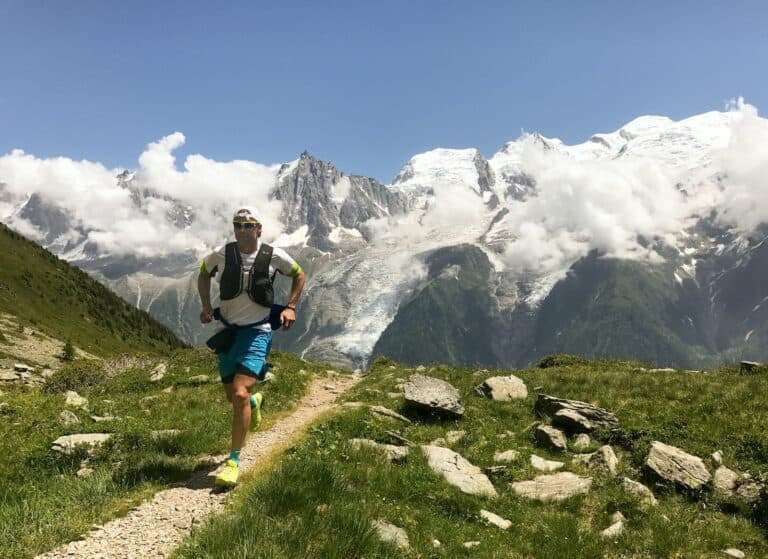Trail running is a thrilling and invigorating activity that allows you to connect with nature while pushing your physical limits. However, it can also take a toll on your body. This is where understanding and implementing effective trail running recovery techniques becomes crucial. After all, how you recover after a challenging trail run can greatly impact your performance in the next one. In this guide, we will explore a range of post-run recovery tips that will help you rejuvenate and get back on the trail with vigor and enthusiasm.
Understanding the Recovery Process
The recovery process is the body’s way of repairing and adapting after intense physical exertion. When it comes to trail running, this process is even more critical due to the varying terrains and elevations that can put significant stress on your muscles and joints. Therefore, a structured recovery routine should be an integral part of every trail runner’s training plan.

Prioritize Rest and Sleep
One of the most underestimated aspects of recovery is adequate rest and sleep. After a long trail run, your body needs time to heal and rebuild. Ensure you get enough sleep, aiming for at least 7-9 hours per night. This is when the body releases growth hormones that aid in muscle repair.
Incorporate Active Trail Running Recovery Techniques
Active recovery involves low-intensity exercises or activities that promote blood flow and help alleviate muscle soreness. Light stretching, yoga, or even a leisurely walk can be incredibly beneficial. This promotes blood flow to your muscles, aiding in their recovery process.
Targeted Muscle Recovery
Utilize a Foam Roller
A foam roller is an invaluable tool for any trail runner. It helps in breaking up stubborn knots and adhesions in the muscles, improving flexibility, and speeding up the recovery process. Spend time rolling out your legs, focusing on areas of tightness or soreness.
Embrace the Power of Compression Gear
Compression socks and tights can work wonders in aiding venous return and reducing swelling in your lower legs. They provide support to your muscles and promote faster recovery. Consider wearing them after a particularly long or demanding run.

Employ a Massage Gun
A massage gun is a fantastic recovery tool that applies concentrated pressure to specific muscle groups. This helps in alleviating muscle soreness and increasing blood flow. Spend time targeting areas that feel particularly tight or fatigued.
Nutritional Strategies for Recovery
Replenish Glycogen Stores
After a long run, your body’s glycogen stores are likely depleted. Consuming a carbohydrate-rich meal or snack within 30 minutes of finishing your run can help kickstart the replenishment process, ensuring you have ample energy for your next run.
Hydration is Key
Drinking water is paramount for effective trail running recovery. It aids in flushing out metabolic waste products from your muscles and keeps your body functioning optimally. Aim to drink at least 8 glasses of water a day, and more on days when you’ve had an intense run.
Incorporate Protein for Muscle Repair
Protein is essential for muscle repair and growth. Consuming a protein-rich meal or shake within an hour post-run can expedite the recovery process. Lean meats, legumes, and dairy are excellent sources of protein.
Cold Water Immersion Techniques
Take an Ice Bath
While it might not be the most pleasant experience, an ice bath can do wonders for reducing inflammation and muscle soreness. Fill a tub with cold water and ice cubes, and immerse your lower body for 10-15 minutes.
Contrast Baths
Alternating between hot and cold water in the shower can also promote recovery. The hot water relaxes your muscles, while the cold water reduces inflammation. Start with 3 minutes of hot water followed by 1 minute of cold, and repeat for 15-20 minutes.
Prioritize Your Mental State
Spend Time in Nature
Trail running is not just a physical activity; it’s an opportunity to connect with nature and clear your mind. Spend some time after your run simply enjoying the natural surroundings. This can have a profound impact on your mental well-being.
Practice Mindful Breathing
Before, during, and after your run, take time to focus on your breath. Deep, mindful breathing can help calm your nervous system, reduce stress levels, and aid in the recovery process.
In conclusion, effective trail running recovery techniques are a vital component of any runner’s training plan. Prioritizing rest, incorporating active recovery, targeting muscle recovery, adopting nutritional strategies, utilizing cold water immersion techniques, and nurturing your mental state are all key elements in ensuring you recover faster and perform better on the trail. Remember, a well-structured recovery plan is just as important as your training plan. So, don’t overlook it – your body will thank you at the next finish line.
- Trail Running And Ankle Strength
- Trail Running And Camping
- Trail Running And Confidence
- Trail Running And Creativity
- Trail Running And Ecotherapy
- Trail Running And Longevity
- Trail Running And Mental Health
- Trail Running And Sun Protection Tips
- Trail Running And Time Efficiency
- Trail Running And Wildlife
- Trail Running At Night
- Trail Running Clothing
- Trail Running Etiquette Dos And Donts
- Trail Running Etiquette With Dogs
- Trail Running For Charity
- Trail Running For Families
- Trail Running For Rehabilitation After Injury
- Trail Running For Stress Relief
- Trail Running For Weight Loss
- Trail Running Gear For Beginners
- Trail Running In Different Altitudes
- Trail Running In Different Weather Conditions
- Trail Running In Remote Locations
- Trail Running On A Budget
- Trail Running Photography
- Trail Running Recovery Techniques
- Trail Running Safety Tips For Beginners
- Trail Running Snacks
- Trail Running Techniques To Boost Your Pace
- Trail Running Tips
- Trail Running With Dogs
- Trail Running With Kids
- Trail Running With Physical Disabilities
- Is Trail Running A Good Workout
- Is Trail Running An Extreme Sport Unraveling The Truth
- Is Trail Running Bad For Your Knees
- Is Trail Running Better Than Road Running
- Is Trail Running Good For Dogs
- Is Trail Running Good For Marathon Training
- Is Trail Running The Same As Cross Country
